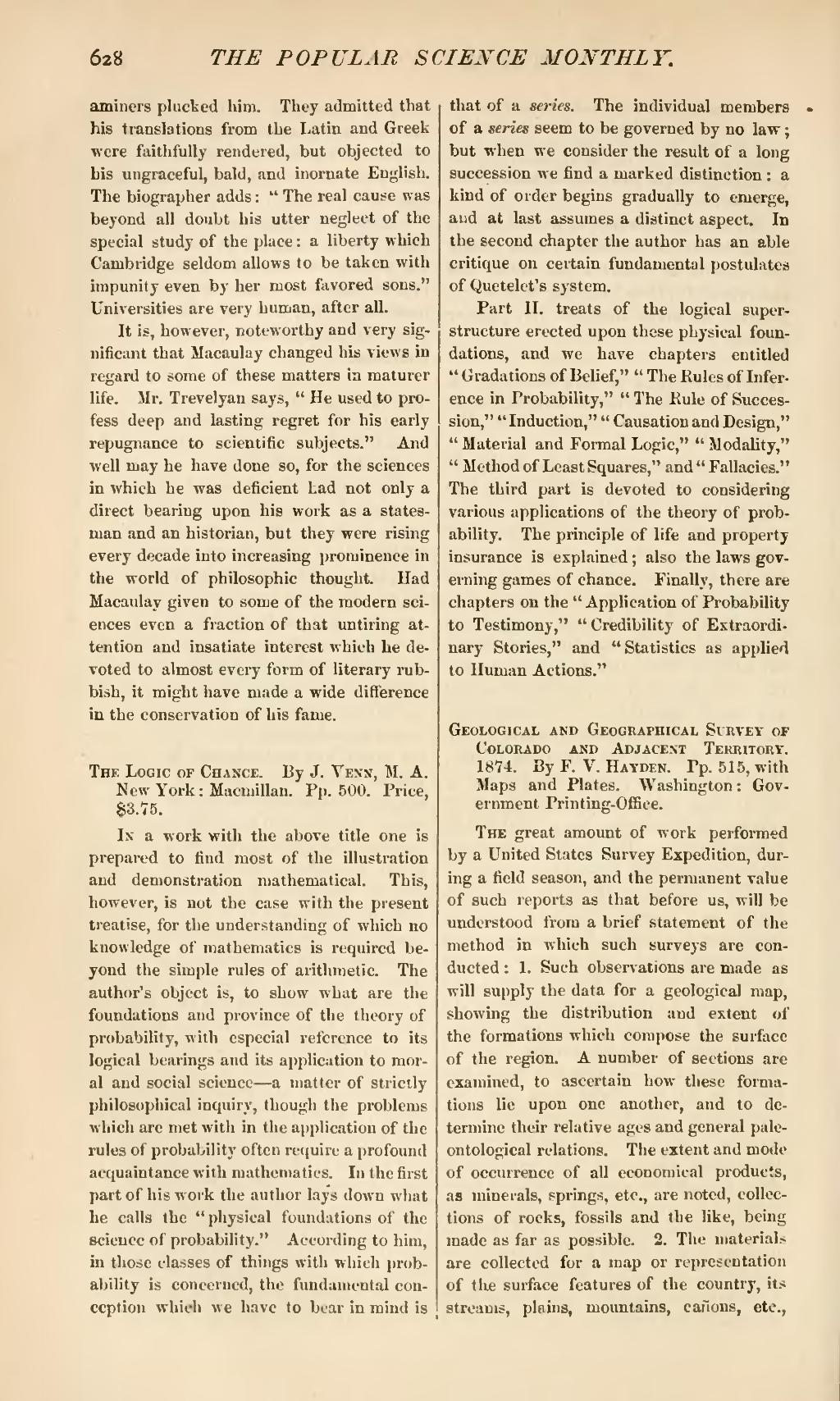aminers plucked him. They admitted that his translations from the Latin and Greek were faithfully rendered, but objected to his ungraceful, bald, and inornate English. The biographer adds: "The real cause was beyond all doubt his utter neglect of the special study of the place: a liberty which Cambridge seldom allows to be taken with impunity even by her most favored sons." Universities are very human, after all.
It is, however, noteworthy and very significant that Macaulay changed his views in regard to some of these matters in maturer life. Mr. Trevelyan says, "He used to profess deep and lasting regret for his early repugnance to scientific subjects." And well may he have done so, for the sciences in which he was deficient had not only a direct bearing upon his work as a statesman and an historian, but they were rising every decade into increasing prominence in the world of philosophic thought. Had Macaulay given to some of the modern sciences even a fraction of that untiring attention and insatiate interest which he devoted to almost every form of literary rubbish, it might have made a wide difference in the conservation of his fame.
The Logic of Chance. By J. Venn, M. A. New York: Macmillan. Pp. 500. Price, $3.75.
In a work with the above title one is prepared to find most of the illustration and demonstration mathematical. This, however, is not the case with the present treatise, for the understanding of which no knowledge of mathematics is required beyond the simple rules of arithmetic. The author's object is, to show what are the foundations and province of the theory of probability, with especial reference to its logical bearings and its application to moral and social science—a matter of strictly philosophical inquiry, though the problems which are met with in the application of the rules of probability often require a profound acquaintance with mathematics. In the first part of his work the author lays down what he calls the "physical foundations of the science of probability." According to him, in those classes of things with which probability is concerned, the fundamental conception which we have to bear in mind is that of a series. The individual members of a series seem to be governed by no law; but when we consider the result of a long succession we find a marked distinction: a kind of order begins gradually to emerge, and at last assumes a distinct aspect. In the second chapter the author has an able critique on certain fundamental postulates of Quetelet's system.
Part II. treats of the logical superstructure erected upon these physical foundations, and we have chapters entitled "Gradations of Belief," "The Rules of Inference in Probability," "The Rule of Succession," "Induction," "Causation and Design," "Material and Formal Logic," "Modality," "Method of Least Squares," and "Fallacies." The third part is devoted to considering various applications of the theory of probability. The principle of life and property insurance is explained; also the laws governing games of chance. Finally, there are chapters on the "Application of Probability to Testimony," "Credibility of Extraordinary Stories," and "Statistics as applied to Human Actions."
Geological and Geographical Survey of Colorado and Adjacent Territory. 1874. By F. V. Hayden. Pp. 515, with Maps and Plates. Washington: Government Printing-Office.
The great amount of work performed by a United States Survey Expedition, during a field season, and the permanent value of such reports as that before us, will be understood from a brief statement of the method in which such surveys are conducted: 1. Such observations are made as will supply the data for a geological map, showing the distribution and extent of the formations which compose the surface of the region. A number of sections are examined, to ascertain how these formations lie upon one another, and to determine their relative ages and general paleontological relations. The extent and mode of occurrence of all economical products, as minerals, springs, etc., are noted, collections of rocks, fossils and the like, being made as far as possible. 2. The materials are collected for a map or representation of the surface features of the country, its streams, plains, mountains, cañons, etc.,
